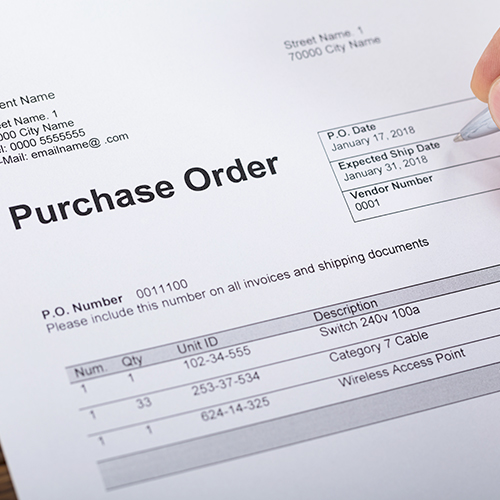Blog Article
eProcurement Can Improve
Efficiency and Compliance
Improve Transparency by Leveraging Technology
David Daffner, Vice President — Managed Services
Let’s take a closer look at the benefits organizations stand to gain from using eProcurement. The Purchasing and Procurement Center defines eProcurement as “the electronic purchase and sale of goods and services, usually through an internet-based platform. It is a tool designed to improve purchasing process transparency and efficiency and help companies capture savings.”
The goal of eProcurement is to acquire a product or service of the greatest value at the best possible price at the time it is needed. Basically, it’s a term that covers many aspects of buying that is facilitated by electronic means such as:
- Requisitioning
- Supplier sourcing
- RFP tendering
- Catalog management
- Spend data management
- Negotiation
- Purchase order
- Delivery
- Contracting
- E-invoicing
- Inventory
eProcurement was first used by IBM in 2000 when the company launched its “replenishment management system and method.” The system was designed to solve IBM’s complex procurement process at their largest laptop-producing plant. The company later sold usage licenses to other companies around the world.
What are the benefits of eProcurement? They fit nicely into three categories:
- Automation: eProcurement automates the tedious manual work associated with traditional procurement methods like phone calls, meetings and snail mail. The result is greater efficiency, improved compliance and cost savings.
- Speed: Companies using eProcurement streamline processes, improve oversight and decrease cycle time from request to purchase. This can lead to an increase in the number of events per buyer.
- Compliance: Compliance is enhanced through improved visibility and management of data, increased RFP process transparency and spend optimization. It usually reduces or eliminates off-contract “maverick spending,” too. Additionally, audits and reviews are easier to conduct and facilitate.
Industries such as oil, gas, pharmaceutical and mining embrace eProcurement more than other sectors do. Governments in mature economies are also adopting eProcurement more extensively, and eProcurement in the public sector has seen rapid growth in recent years.
Many organizations boost the benefits of eProcurement by employing strategic sourcing rather than tactical sourcing, which often proves to be inefficient and more expensive. With strategic sourcing, a proactive, planned analysis of suppliers can deliver solutions to predetermined business needs, maximizing the value and reaping the full benefits of eProcurement. It’s been estimated that smart businesses can realize greater savings and see an ROI in a matter of weeks or even days.



